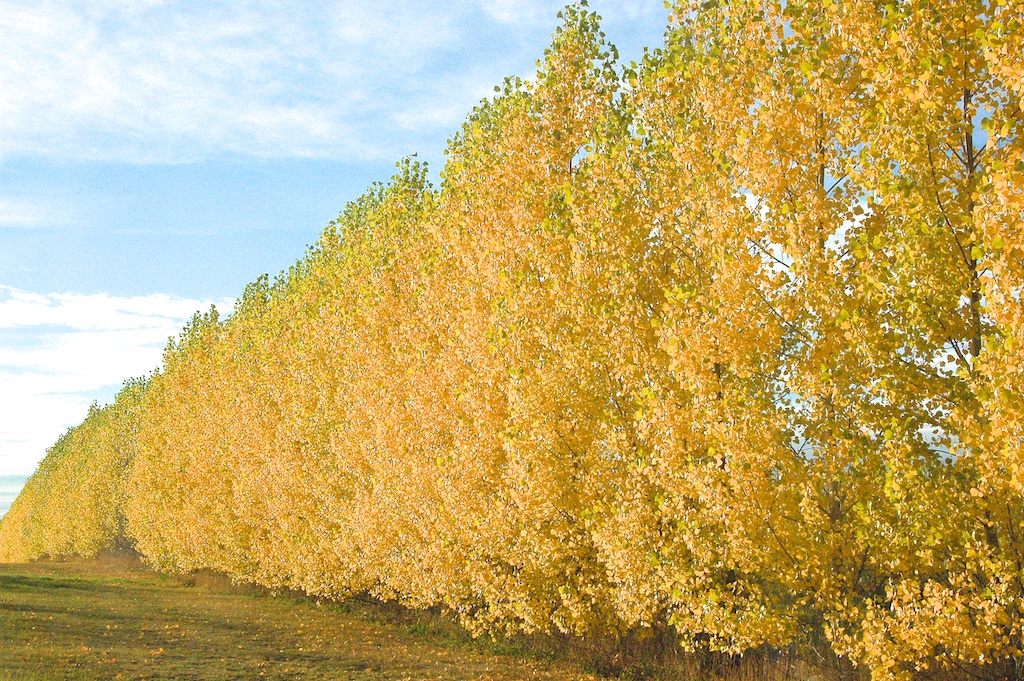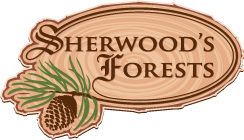
The edge were tree meets field creates a haven for all sorts of critters.
Romance Cherries
Prunus cerasus X fruiticosa
These are recently released from the university of Saskatchewan. There are six cultivars: Romeo, Juliet, Cupid, Valentine, Crimson Passion, and Carmine Jewel. The story behind these is fascinating, and spans nearly 70 years of trials, tests, and selections by various plant breeders.
These cherries are a cross between European sour cherries (pie cherries) and a Mongolian cherry. The latter has a small bitter fruit only a bird could love, but supplies winter hardiness. These cherries are naturally dark ranging from medium red to almost black -- no food coloring needed, unlike conventional pie cherries, with their pale fruit.
Fruit are fairly large, almost the size of a quarter. They run 75 to 100 cherries to the pound.
The trees don't get very big -- typically 6-8 feet tall. They fit small yards, and you can pick most of the fruit from the ground. Yields are typically 2-3 ice cream pails per tree. -- 20-25 lbs.
Much like choke cherries they can be grown as either single trunked trees or as a multitrunk shrub. First cherries typically come in the 4th year, full production about year 7. It's too soon to tell what the best time to replace an orchard is. Probably at least 15 years. They do sucker some. Suckers can be used as a form of renewal to extend their productive life. The same harvester used for saskatoons can be used for Romance cherries. Cherries are a good combination with Saskatoons, as with selection of the later ripening varieties, there is nearly no overlap in harvesting season.
Despite their sour cherry ancestry, these cherries are as sweet or sweeter than conventional eating cherries. The result is high in both citric acid and sugar. Think cherry lemonade.
I picked three to start with -- Carmine Jewel, Romeo and Juliet. These three should allow you to pick cherries from the end of July to mid September.
Characteristics of Carmine Jewel & the Romance Series of cherries. The first 3 rows are one's I've chosen to grow and sell.
| Name | Height | Ripens | Fruit size | Notes |
|---|---|---|---|---|
| Colour | Sweetness | |||
| Carmine Jewel | 6.5 ft | Late July Almost Black |
4 grams 110/lb Brix ?? |
Best ornamental, high productivity, smaller fruit. |
| Romeo | 6.5 feet | Early September Dark Red |
4 grams 110/lb brix 22 |
Similar to Jewel, but much later to ripen. Gives fruit a year earlier. Good juicer. |
| Juliet | 6.5 ft | Mid August Dark Red |
5 grams 90/lb Brix 20 |
High productivity. Very good fresh eating. |
| Cupid | 6.5 ft | Late August Almost Black to Dark Red |
6.5 grams 70/lb Brix 19 |
Moderate producer -- Blooms later. |
| Crimson Passion | 5.5 ft | Early August Almost Black |
6 grams 75/lb Brix 22 |
Pits large enough to work with older crank pitters. |
Sweetness, and average fruit size depend on growing season. Cool weather and wet weather produce less sweet fruit. Harvest as late as possible for maximum sweetness.
Romance Cherry inventory is above, on the Cherries page
Photos courtesy Bob Bors, University of Saskatchewan Fruit Program.
MUCH more information about these cherries start at
Romance Cherries at USask Fruit Program
(http://www.fruit.usask.ca/dwarfsourcherries.html)
Got something to say? Email me: sfinfo@sherwoods-forests.com
Interesting? Share this page.
Want to talk right now? Call me: (8 am to 8 pm only, please) 1-780-848-2548
Do not arrive unannounced. Phone for an appointment. Why? See Contact & Hours That same page gives our hours of operation.
Back to Top
Copyright © 2008 - 2021 S. G. Botsford
Sherwood's Forests is located about 75 km southwest of Edmonton, Alberta. Please refer to the map on our Contact page for directions.
